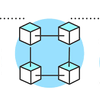The Difference Between HTTP and WebSocket Protocols
When it comes to web communication, two of the most commonly used protocols are HTTP and WebSocket. While they share some similarities, they also have significant differences that set them apart from each other. In this article, we will explore the differences between HTTP and WebSocket protocols.
What is HTTP?
HTTP stands for Hypertext Transfer Protocol, which is an application protocol used to transmit data over the internet. It is a request-response protocol, which means that the client sends a request to the server, and the server responds with the requested data. HTTP is stateless, meaning that each request and response is independent of any previous request or response.
What is WebSocket?
WebSocket is a protocol that enables bi-directional, real-time communication between the client and the server over a single TCP connection. Unlike HTTP, WebSocket is not a request-response protocol but instead allows the server to send data to the client at any time, without the client having to request it. This makes WebSocket ideal for real-time applications like chat rooms, multiplayer games, and stock market tickers.
Differences Between HTTP and WebSocket
1. Connection Establishment
HTTP is a stateless protocol, meaning that a new connection is established for each request and response. In contrast, WebSocket uses a single TCP connection that remains open for the duration of the session, allowing for real-time communication.
2. Data Transmission
HTTP is a request-response protocol, meaning that the client must initiate a request to the server to receive data. On the other hand, WebSocket allows for bidirectional communication, meaning that the server can send data to the client at any time without the client having to request it.
3. Data Format
HTTP uses text-based data formats such as JSON and XML to transmit data between the client and server. In contrast, WebSocket uses a binary format that is more compact and efficient for real-time communication.
4. Security
HTTP uses SSL/TLS encryption to secure data transmission between the client and server. WebSocket also supports SSL/TLS encryption, but it is optional.
Conclusion
HTTP and WebSocket are both protocols used for web communication, but they have different features and use cases. HTTP is a request-response protocol that is ideal for transmitting data between the client and server. WebSocket, on the other hand, is designed for real-time communication and is more suitable for applications that require real-time data transmission. Understanding the differences between these protocols is essential for developing efficient and secure web applications.
Outlook
As the demand for real-time applications continues to grow, the use of WebSocket is becoming more prevalent. However, HTTP remains the backbone of web communication, and its importance cannot be overlooked. As technology advances, it is likely that new protocols will emerge, and it will be interesting to see how they compare to HTTP and WebSocket.

When it comes to web communication, two of the most commonly used protocols are HTTP and WebSocket. While they share some similarities, they also have significant differences that set them apart from

When browsing the internet, you may have noticed that some websites have "http" in their URL while others have "https". These are two different protocols that websites use to transmit data between the

When we interact with websites or web applications, we often hear about GET and POST requests. Both of these are HTTP methods that are used to retrieve and send information to web servers. However, th
